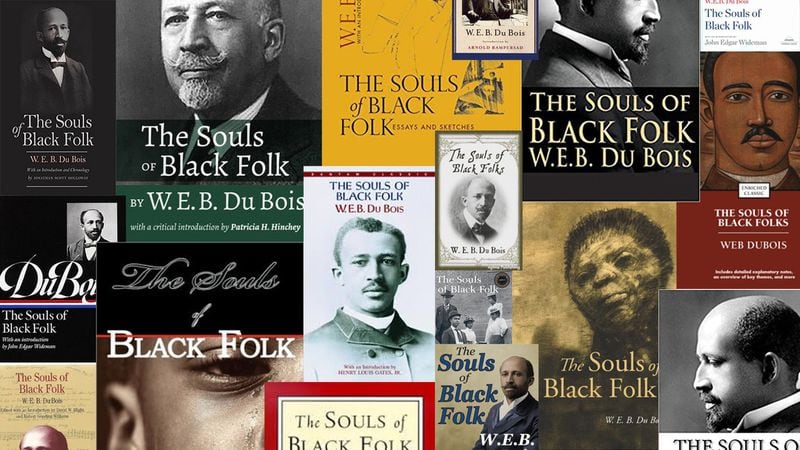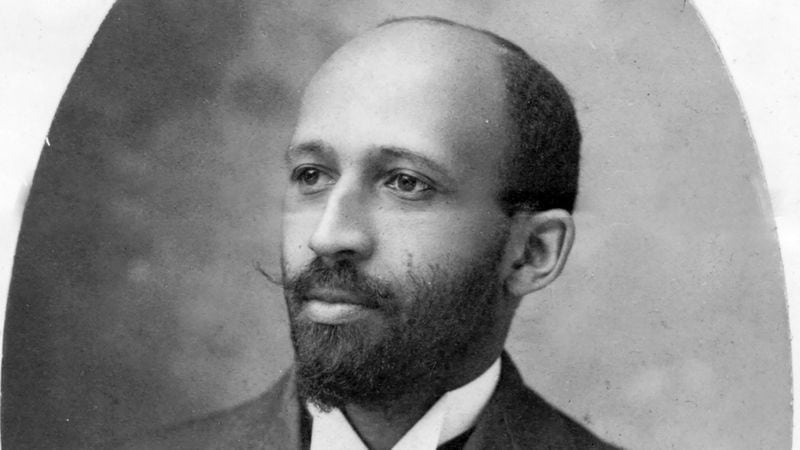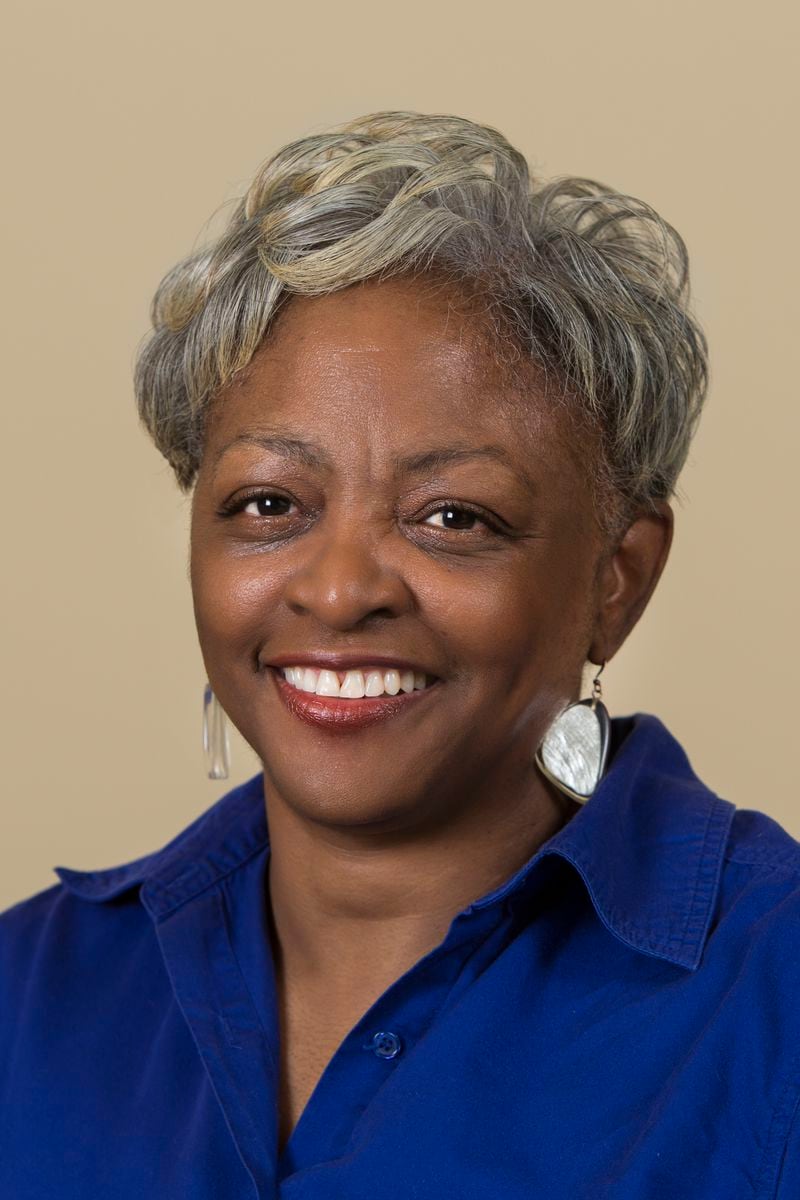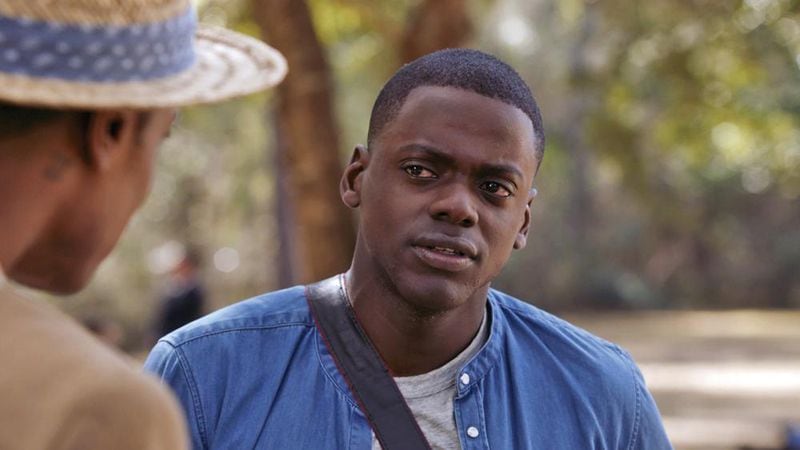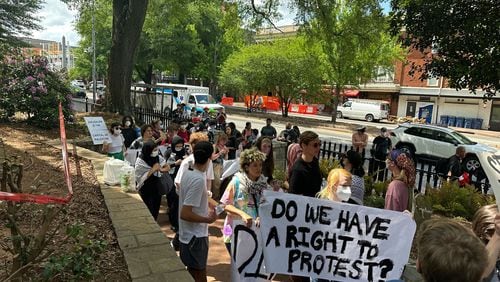This article originally ran on Feb. 15, 2019.
As Black scholar W.E.B. Du Bois told it, the story of one of the most revolutionary concepts in American life began more than 100 years ago in a wooden New England schoolhouse.
That era’s schoolyard craze was to exchange “visiting cards,” which grownups gave to announce they had dropped by for a visit. A white girl refused his “with a glance,” he wrote.
In that instant, Du Bois realized that white children saw him as less worthy because of the color of his skin. Being Black and American meant heaving a “double-consciousness,” the Atlanta University scholar concluded, or to be constantly aware of white contempt for your Black self.
» RELATED: Read AJC Sepia’s full Black History Month Series
"It is a peculiar sensation, this double-consciousness, this sense of always looking at one's self through the eyes of others, of measuring one's soul by the tape of a world that looks on in amused contempt and pity," Du Bois wrote in his 1903 masterpiece "The Souls of Black Folk."
“One ever feels his two-ness,” Du Bois continued. “An American, a Negro; two souls, two thoughts, two unreconciled strivings; two warring ideals in one dark body, whose dogged strength alone keeps it from being torn asunder.”
For Du Bois, the threat of being “torn asunder” was literal, notes Emory University professor Carol Anderson, author of the 2017 best-seller “White Rage: The Unspoken Truth of Our Nation’s Divide.”
Lynching was routine. Churches sold tickets and encouraged spectators to bring their families. Victims were dismembered, their body parts tossed to cheering crowds. Studies found that these attacks took place not because Blacks committed crimes, but because they tried to assert themselves as equal to whites.
An 1899 lynching near Newnan pushed Du Bois to take a more radical approach to his role as a scholar. As he walked through downtown Atlanta, he learned that Black laborer Sam Hose was lynched after an argument with his boss over unpaid wages. Hose’s knuckles were on display as a trophy in a grocer’s window further down Mitchell Street.
At the time, famous educator Booker T. Washington had been arguing that Blacks should accept racial segregation as a necessary compromise, and gain wealth and white approval by mastering manual trades such as farming or making bricks. Du Bois believed that Blacks could overcome racism by doing the very thing that placed them at risk of lynching — strive for full recognition of Black freedom, humanity and equality.
Credit: Nedra Rhone
Credit: Nedra Rhone
"That's double-consciousness. The striving, while also knowing that it's not the presence of blackness that causes white rage, but it is black achievement, black aspiration," Anderson said. "The American dream of striving will destroy you, but if you don't strive, you get destroyed," she said.
Du Bois’ concept proved to be so powerful that it launched more than a century of political action, social criticism, scholarship, literature and art that explored the personal and political struggles that Black Americans need to fight to be recognized as equals.
Some 60 years later, author and social critic James Baldwin described how his father wrestled with an awareness of white racism that comes with double-consciousness. The father feared his son was “putting himself in the path of destruction” because he aimed to accomplish all that a white person could, Baldwin recalled.
In literature, scholars have noted how novelists William Faulkner, Toni Morrison and Richard Wright portray certain Black characters as seeing themselves from afar, as if their consciousnesses had been split apart.
Credit: Photo Credit: Universal Pictures
Credit: Photo Credit: Universal Pictures
» RELATED: How ‘Atlanta Compromise’ divided Black America and cemented Washington’s legacy
» RELATED: ‘Tragic Mulatto’: Past depictions give way to today’s biracial pride
» RELATED: How the Doll Test made us see ourselves
In pop culture, double-consciousness appears in Jordan Peele’s 2017 movie “Get Out,” in which white people who hold twisted ideas about Black achievement literally steal the souls of Black folk.
It also lies at the center of an episode of Donald Glover’s TV series “Atlanta,” in which a Black father’s cruel drive to turn his son into a virtuoso pianist turns the musician in his old age into a freakish specter with a white face.
Du Bois’ revelations continue to haunt politics and criminal justice. When Donald Trump, then a TV reality show star, demanded that President Barack Obama release his birth certificate, it was a reminder that Blackness and American-ness remain as Du Bois described: “two warring ideals in one dark body,” Anderson said.
Blacks continue to face deadly consequences if they forget these limits, even if they are children, Anderson said. Tamir Rice, 12, was shot and killed by police in 2014 while he held a toy gun outside a Cleveland recreation center. Video showed he was shot within two seconds after the police arrived.
Tamir died because police saw him as a Black criminal, not a child, critics said.
BLACK HISTORY MONTH
Throughout February, we’ll spotlight a different African American pioneer in the daily Living section Monday through Thursday and Saturday, and in the Metro section on Fridays and Sundays. Go to AJC.com/black-history-month for more subscriber exclusives on people, places and organizations that have changed the world, and to see videos on the African American pioneer featured here each day.
